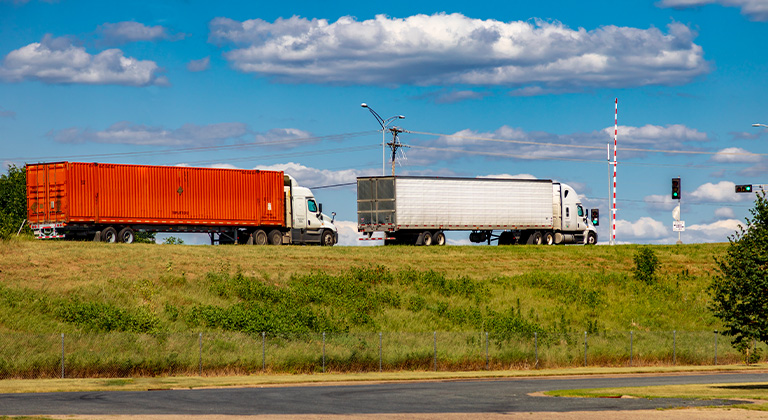What are no zones?
No zones—also known as truck blind spots—are specific areas on the road that truck drivers can’t see because of the size of their vehicles. If you’re driving in one of these zones, the truck driver won’t be able to see you—creating circumstances where an accident is more likely.
Where are a semi truck’s no zones?
A truck typically has four no zones. They’re located directly in front of, behind, and on each side of a semi.
Front no zone
This spot can stretch up to 20 feet in front of a semi’s front bumper.
Rear no zone
This zone extends at least 30 feet behind a semi-truck, but it can be longer depending on a truck’s specific size and shape.
Driver’s side no zone
This zone is located on the truck driver’s side. It starts at about the truck’s side mirror and extends out at an angle for one lane, and back to about midway through the truck’s trailer.
Passenger’s side no zone
This zone is on the truck’s passenger side, starting at about the truck’s side mirror. It stretches out at an angle for about two lanes and back past the truck’s rear wheels.

A semi-truck has four no zones—located in front of, behind, and on each side.
Tips for helping avoid no zones
If you’re not sure whether you’re in a no zone, a good rule of thumb is to look for the truck driver’s face in their side mirrors. If you can see their face, they can likely see you. If you can’t see their face, you’re probably in a no zone—and you should try to safely get back in their line of sight.
Here are some more general safety tips:
Don’t cut too closely in front of a truck. You’ll likely enter the front no-zone and the truck driver won’t be able to see you. This could cause an accident if you need to come to an abrupt stop.
Give trucks plenty of room and time to turn. Trucks also have a blind spot on their passenger’s side when they’re turning, particularly when they’re turning right. You don’t want to get caught between the truck and the curb.
Pass trucks safely. Don’t linger in a no zone. If possible, pass on the truck’s left side as it has the smallest no zone.
Use turn signals early. This can give the truck driver a fair warning that you’ll be switching lanes or slowing down to turn.
Be extra cautious when merging next to a truck. You’ll likely be merging right into a no zone.
Learn more about the different types of trucking accidents—many of which could be caused by being a truck’s no zone.
Related resources
How to file a trucking accident claim
Learn how truck accident claims work—including how they differ from car accidents, and how you can help ensure a smooth process.
How to file a third-party claim
A third-party insurance claim is one you file with someone else’s insurance company when you believe you’re entitled to compensation following an accident.
Should I file a claim after an accident?
Even if your insurance policy doesn’t require you to file a claim, it’s generally best to file one—whether you were in a single-vehicle accident or one with another driver.




